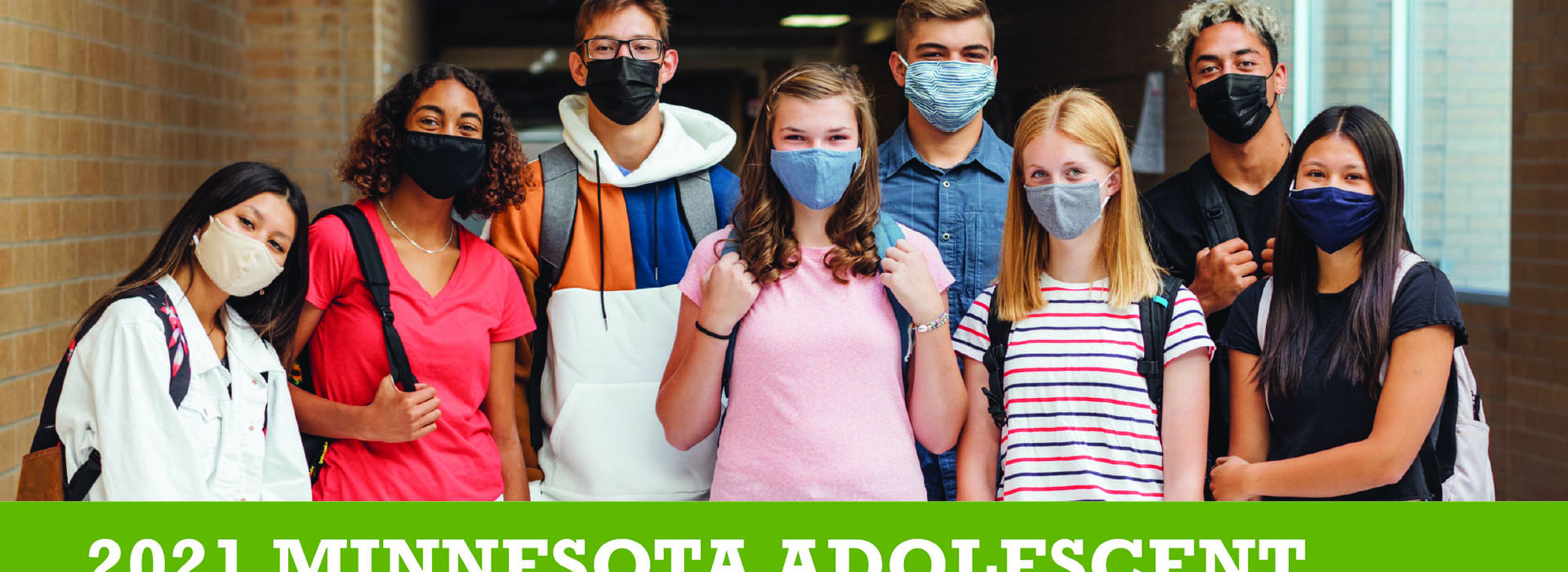
U of M Medical School report details the effects of COVID-19 on adolescent sexual health
MINNEAPOLIS/ST. PAUL (06/23/2021) — A new report from the University of Minnesota Medical School’s Healthy Youth Development - Prevention Research Center (HYD-PRC) highlights that Minnesota youth continue to contract sexually transmitted infections (STIs) at alarmingly high rates, despite the COVID-19 pandemic.
The 2021 Minnesota Adolescent Sexual Health Report says that chlamydia and gonorrhea rates among Minnesota adolescents in 2020 are likely underreported, as both STI testing and case detection were scaled back during the early stages of the pandemic. However, teen pregnancy rates remain virtually unchanged from 2018, and birth rates are at historic lows for 15- to 19-year-olds.
“We must continue to highlight the importance of condoms and other barrier methods, utilize new and innovative public health educational campaigns, address STI testing shortages and expand young people’s access to STI screening and treatment,” said Jill Farris, MPH, director of Adolescent Sexual Health Training and Education for the HYD-PRC at the U of M Medical School.
Minnesota youth are disproportionately impacted by STIs, with the highest chlamydia and gonorrhea rates among Black and Hispanic youth. While adolescents aged 15 to 19 are only 6.5% of Minnesota’s population, they accounted for 25% of all chlamydia cases and 16% of gonorrhea cases in 2020.
The report also details that disparities in sexual health outcomes — by geography, race and ethnicity — continue to persist. Rural areas in Minnesota continue to experience the highest teen birth rates in the state. Birth rates for American Indian, Black and Hispanic youth are higher than for white youth, and birth rates for Asian/Pacific Islander and American Indian youth are higher than national figures.
“COVID-19 may also play into the rates of STIs and pregnancy,” Farris said. “While we won’t know the full impact of COVID-19 on the sexual health of adolescents for a few years, we do know that providers made extraordinary efforts to reach out and connect with youth during this difficult time.”
Adolescent sexual health clinicians and educators utilized telehealth/virtual learning last year due to COVID-19. The HYD-PRC surveyed 94 organizations that provided adolescent sexual health care, sex education or both during the pandemic. Organizations reported on their use of telehealth/virtual education and shared that online and hybrid options for health care and sex education need to continue after the pandemic to improve health equity among adolescents in Minnesota.
“We are excited to analyze the data over the next few years to determine if virtual platforms increased the reach of sexual health education and services, which, in turn, hopefully continues to decrease the rates of STIs and pregnancies among Minnesota youth,” Farris said.
While many programs and services focus on changing individual behaviors that lead to teen pregnancy, more attention is now being focused on the social determinants that contribute to poor health outcomes through systematic lack of access to resources, power and opportunity.
“We must fully support young people’s health by addressing their physical, social, emotional and cognitive development and provide them with skills and support to make healthy decisions,” Farris said. “Continued focus on reducing systematic barriers and continuing to provide online and hybrid options for health care and sex education will empower Minnesota youth to make healthy choices.”
The full report aims to help Minnesotans understand the current landscape of young people’s sexual and reproductive health and how it is tied more broadly to healthy youth development. Interactive, individualized reports for each of Minnesota’s 87 counties are also provided. To learn more about the Healthy Youth Development-Prevention Research Center, visit this website.
###
About the University of Minnesota Medical School
The University of Minnesota Medical School is at the forefront of learning and discovery, transforming medical care and educating the next generation of physicians. Our graduates and faculty produce high-impact biomedical research and advance the practice of medicine. We acknowledge that the U of M Medical School, both the Twin Cities campus and Duluth campus, is located on traditional, ancestral and contemporary lands of the Dakota and the Ojibwe, and scores of other Indigenous people, and we affirm our commitment to tribal communities and their sovereignty as we seek to improve and strengthen our relations with tribal nations. For more information about the U of M Medical School, please visit med.umn.edu.
For media requests, please contact:
Kelly Glynn
Media Relations Specialist
University of Minnesota Medical School
glynn040@umn.edu